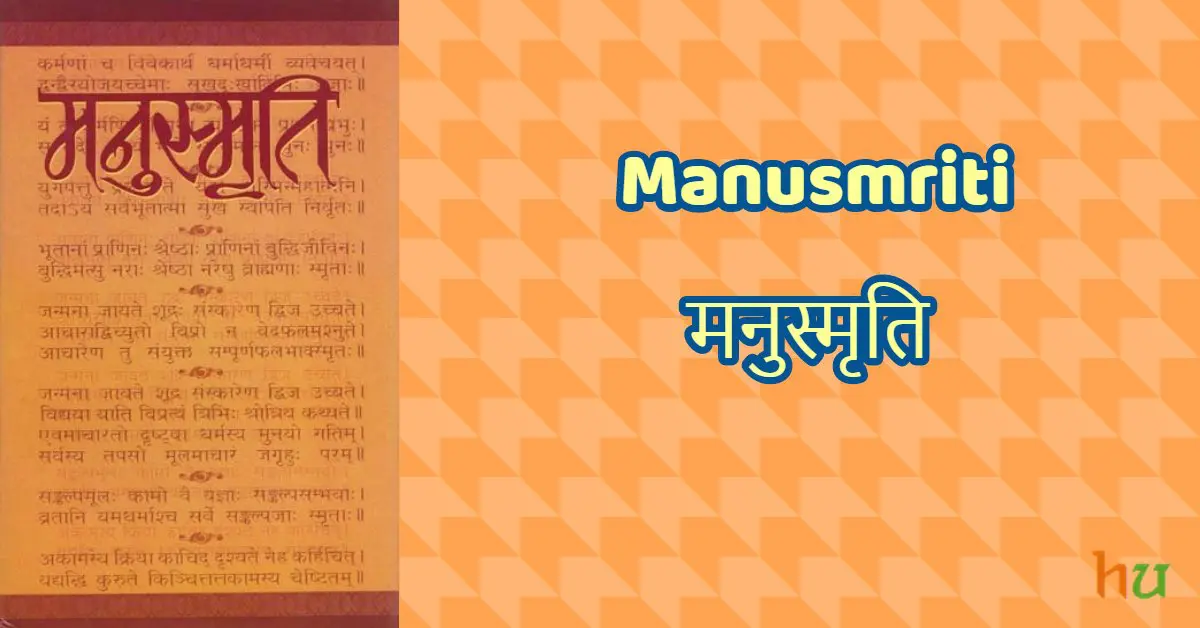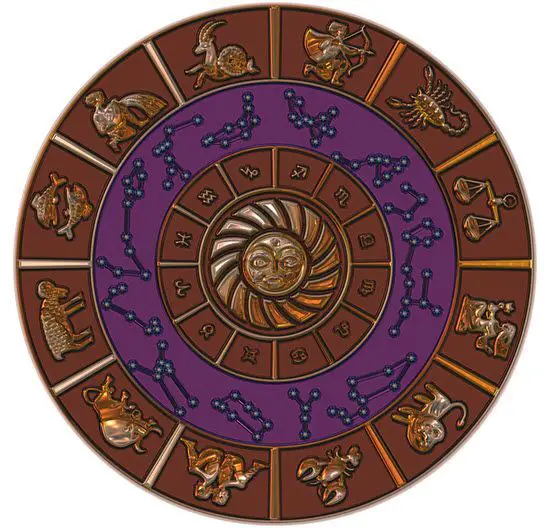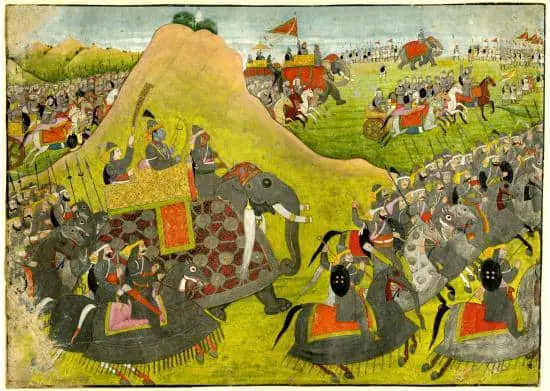Manusmriti, which is referred to as Manava Dharmashastra, is an ancient Hindu legal text which describes the structure & function of Indian society.
It is a detailed text and covers all aspects of people’s lives belonging to all social strata. The book has been attributed to the legendary first man and lawgiver, Manu. Here, you will come to know about Manusmriti: Laws of Manu.
The Manusmriti contains 12 adhyāyas or lessons. The text covers four broad themes, such as:
- The creation of the world
- Sources of Dharma
- The dharma of the four social classes
- The law of Karma, rebirth, & the final liberation
It is believed that the text was compiled by not one but many writers.
Manusmriti describes the role that is to be performed by the four Varnas, including –
- The Brahmins
- The Kshatriyas
- The Vaishyas
- The Shudras
Moreover, Manusmriti has been regarded as the backbone of the Indian caste system.

It details the moral code of conduct and behavior that should be followed by the superordinate and the subordinate.
It also gives a detailed account of the duties that are to be performed by the women within the household.
Who was Manu?
According to the Hindu Vedic tradition, Manu is considered the first spiritual son of Brahma and a progenitor of the human race.
In fact, Manu is not the name of a particular person.
Instead, it’s a title given to a person who has been chosen to lead humanity as the first ruler.
According to the Hindu Puranas, each Kalpa consists of fourteen Manvantaras. Each Manvantara is supposed to be headed by a different Manu. The current universe is under the rule of 7th Manu named Vaivasvata.
Till now, there have been 7 Manus:
- Svayambhuva
- Svarocisa
- Uttama
- Tamasa
- Raivata
- Caksusa
- Vaivasvata (the current Manu)
So, the first human being in each Kalpa is called Manu. Therefore, it is very difficult to predict the age of Manusmriti.
In Hinduism, each creation cycle is headed by a primordial man who is Manu. So, there is a diversity of Manus in Hinduism.
He is considered to be the progenitor of the human race and is recognized as the first lawgiver. Manu Smriti is an essential law book of the Hindus. It refers to the first Manu – Svayambhuva, the spiritual son of Brahma.
The seventh Manu is known as Vaivasvata.
He has ten sons, namely:
- Ikshvaku
- Nabhaga
- Dhrsta
- Saryati
- Narisyanta
- Dista
- Tarusa
- Prsadhra
- Vasuman
The Seven Sages are:
- Kashyap
- Atri
- Vashishta
- Angira
- Gautama
- Agastya
- Bharadwaja
The king of heaven, Indra, is known as Purandara.
What is Manusmriti?
Manusmriti or Laws of Manu is a Hindu Dharmashastra containing laws regarding society, taxes, warfare, etc.
It is recognized as the world’s first constitution.
This metrical text is written in Sanskrit and presents itself as a discourse that was given by Manu (Svayambhuva) and Bhrigu on Dharma topics, including:
- Duties
- Rights
- Laws
- Conduct
- Virtues
- Others
This ancient legal text was used by the British colonial government to formulate the Hindu law.
Manusmriti has been translated into English by Sir William Jones in 1776.
This Hindu legal text has been dated to be from the 2nd century BCE to 3rd century CE.
Some philologists, such as Sir William Jones, have assigned Manusmriti to around 1250 BCE. However, later scholars shifted its chronology to between 200 BCE and 200 CE.
Manusmriti is recognized as a law book of the Hindus. It is a document that compiles and organizes the code of conduct for human society.
It describes the origin of the world, the origin of the four Varnas, the law for the four communities, and the fruits of life’s actions and liberating oneself from the cycle of birth and death.
The origin of Manusmriti has been attributed to Brahma, who passed it on to the first human, Manu.
It was Manu who passed it on to the first teacher, Bhrigu, who later passed it on to other sages.
Manusmriti propagates the Vedic view that the Hindu society is composed of four kinds of communities:
- Brahmins – the ones who know the Vedas
- Kshatriyas – the ones who govern the land
- Vaishyas – the ones who trade
- Shudra – the ones who serve
Manusmriti contains nearly 2500 verses.
Of these, more than a thousand are for Brahmins. It contains more than a thousand verses for kings, statecraft, and governance. It has only eight verses for Vaishyas and two for Shudras.
So, the focus is on Brahmins and their relationship with the kings. It meant the success and significance of the Brahmins in society.
Manusmriti was not in much use as India came under the governance of Muslim rulers. The British East India Company used Manusmriti as the Hindu law book, which made it famous throughout the world.
In the 20th century, Manusmriti was seen as the source of India’s inequalities, which led to the public burning of this book.
However, it will be apt to say that Manusmriti was merely documenting the already prevalent social practice with Brahmins at the helm of society.
Lot’s of experts believe that current Manusmriti is manipulated to divide Hindus on a cast basis.
So, that’s all in this post on Manusmriti: Laws of Manu. We believe that you would have found the post useful and interesting. Thanks for visiting. We welcome your comments and suggestions.




